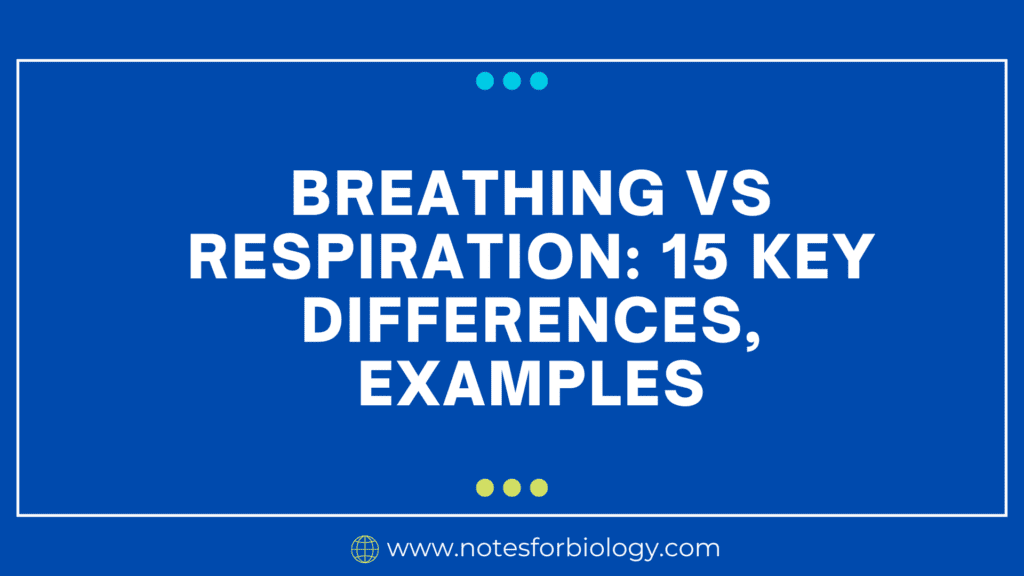Define Respiration?

Respiration is a crucial process that all living organisms require to stay alive. It involves the exchange of gases mainly oxygen and carbon dioxide between the body and the surrounding environment. In humans, this exchange primarily takes place in the lungs, which are located in the chest.
Table of Contents
Types of Respiration
Cellular Respiration
This process happens inside the cells of an organism. It involves the breakdown of glucose in the presence of oxygen to generate energy. The energy produced is then utilized by the cells to perform various functions.
External Respiration
This is the exchange of gases between the organism and its external environment. In humans, external respiration occurs in the lungs, where oxygen enters the body and carbon dioxide is expelled.
Anatomy of the Human Respiratory System
The human respiratory system is a well-organized structure made up of several organs and tissues that work together to support breathing. It includes:
Nasal and Oral Cavities: These are the two main entry points for air. The nasal cavity is lined with tiny hairs called cilia, which filter dust and other particles. While air can enter through the mouth, the nasal cavity is more efficient for breathing.

Pharynx: This muscular tube connects the nasal and oral cavities to the larynx and acts as a shared pathway for both food and air.
Larynx: Also called the voice box, the larynx sits at the top of the trachea and houses the vocal cords, which vibrate to produce sound.
Trachea: Commonly known as the windpipe, the trachea connects the larynx to the bronchi. It is kept open by cartilage rings to ensure proper airflow.
Bronchi: The trachea splits into two bronchi, with each one leading to a lung. These bronchi further divide into smaller tubes called bronchioles.
Alveoli: The bronchioles terminate in small air sacs called alveoli. Surrounded by tiny blood vessels called capillaries, the alveoli are where gas exchange occurs. Oxygen enters the blood while carbon dioxide moves from the blood to the alveoli to be exhaled.

Lungs: These are the two large, spongy organs on either side of the chest cavity. The lungs are encased by the rib cage and separated from the abdominal cavity by the diaphragm.
Diaphragm: This dome-shaped muscle sits below the lungs and plays a critical role in breathing. It contracts and relaxes, facilitating the movement of air into and out of the lungs.
The Breathing Process
Breathing is a rhythmic activity that includes the inhalation and exhalation of air. The diaphragm and the intercostal muscles (between the ribs) work in unison to create these movements.
Inhalation
During inhalation, the diaphragm contracts and flattens, while the intercostal muscles lift the rib cage. This action increases the space in the chest cavity, causing air to flow into the lungs through the nasal or oral cavity.
Exhalation
In contrast, when the diaphragm relaxes and returns to its dome shape, the intercostal muscles also relax, lowering the rib cage. This reduces the chest cavity’s space, pushing air out of the lungs.
Respiration is a sophisticated process that requires the coordination of various organs and tissues. It ensures the body has a continuous supply of oxygen, which is essential for energy production, while also eliminating carbon dioxide, a byproduct of metabolism. Without this process, living organisms would not be able to survive.
Frequently Asked Questions (FAQ)
What do you mean by sophisticated process?
A “sophisticated process” is a convoluted and meticulously planned sequence of events or operations that effectively cooperate to accomplish a particular goal.
Define about Inhalation?
Drawing air into the lungs is known as inhalation, and it usually happens through the mouth or nose. It happens when the diaphragm contracts and descends, and the rib cage is lifted by the intercostal muscles between the ribs. This opens up the chest cavity and lowers the lung’s air pressure, allowing air to enter.
Related Articles




